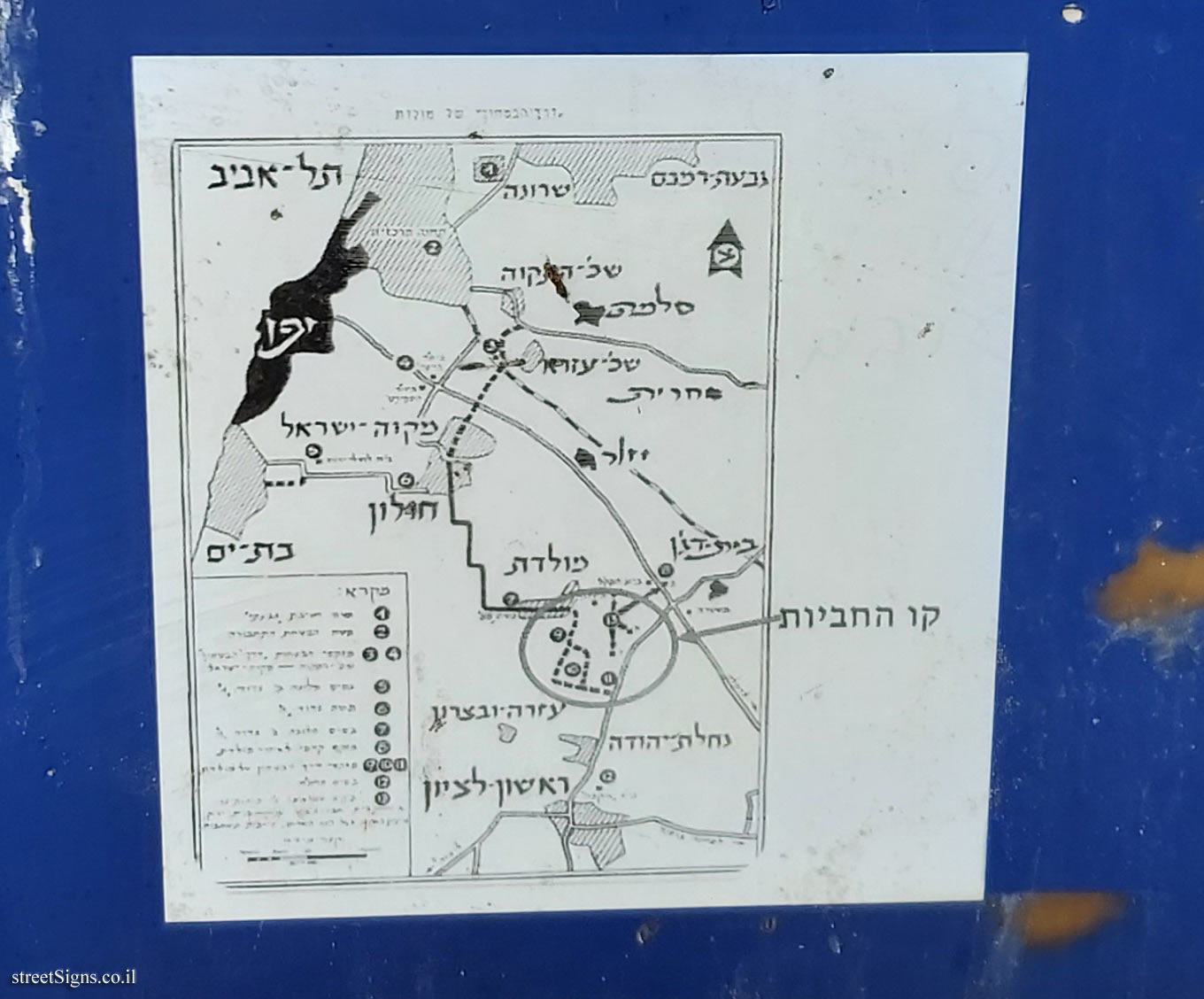The sign shape is rectangular but its head is designed according to the silhouette of the old building of the Gymnasia Herzliya, which serves as a logo of the Council for the Preservation of Heritage Sites in Israel
A number of barrels left over from the barrel line, and located near the sign were photographed that day
 Click for a larger image
Click for a larger image The "Security Road" is immortalized on another heritage sign, with almost identical text, while in the map attached to the sign you can clearly see the barrel line
 Click for sign's details
Click for sign's details You can see the map in the following picture
 Click for a larger image
Click for a larger image The security road is also indicated on a sign located in Mikve Israel
 Click for sign's details Translation of the text on the sign
Click for sign's details Translation of the text on the sign:
Symbol of the Council for the Preservation of Israeli Heritage Sites
The emblem of the Ministry of Culture and Sport
Holon city emblem
"Barrel Line" At the beginning of 1948, when the Arabs sitting next to the Jaffa-Jerusalem road opened fire on the cars of Jews traveling on the road, a road had to be paved to bypass the Arab settlements.
The "Security Road" in Holon was paved by Agrobank engineers, who deployed iron nets and poured concrete surfaces. The beginning was in the Ezra neighborhood in south Tel Aviv. Later, she crossed a wooden bridge over Wadi Musrara (Nahal Ayalon), entered the area of the "Mikve Israel" agricultural school, continued south along Henkin Street, passed "Hosmasa" (today the "Yad Hagana" museum), passed between the houses of the neighborhood "Moledet" and continued east to the orchards of Nahalat Yehuda.
As the Arab firing and barrage continued, the road had to be diverted south, towards the houses of the "Ezra and Bitzaron" neighborhood (Ramat Eliyahu today). The road passed through migrating sands, and to prevent the road from being covered by the sands, rows of barrels were placed west of the road, on several floors, in which the tar was brought to paving. This is how they created the "barrel line".
The road continued to Rishon Lezion, Rehovot, Hulda and Jerusalem. In this way, convoys also traveled to the besieged Negev.
The Givati Brigade fighters defended the "Security Road". The road helped and contributed greatly to the Jewish community’s standing in 1948, during the first months of the war.
[Image and map indicating the barrel line]

 Click for a larger image
Click for a larger image  Click for sign's details
Click for sign's details  Click for a larger image
Click for a larger image  Click for sign's details
Click for sign's details